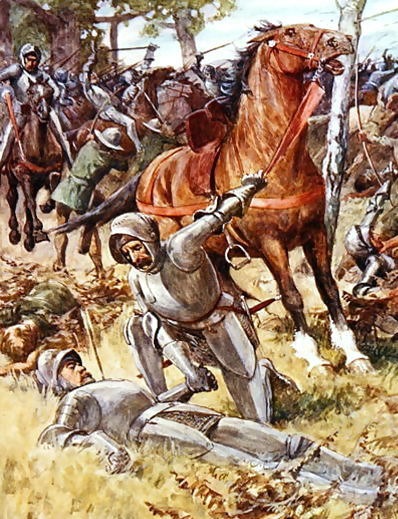Riding Level 2: The Vaulting Dismount
There are many ways to get off a horse, but only a few that are deliberate and don't involve pain or embarrassment. When you first learn to ride that ground seems awfully far away, and it takes a while to learn to dismount with confidence and grace. That's why it's not until level 2 that we mark you on your
13. Vaulting dismount from halt
Western riders often leave the left foot in the stirrup until the right foot reaches the ground. A variation of the English dismount is to stand in the left stirrup, swing the right leg to the left of the horse, leaning on the saddle, then kick the left foot out and jump to the ground. However, neither of these is a vaulting dismount, which involves removing both feet from the stirrups before swinging the right leg over and jumping to the ground in a single motion.
Why vault?
Although the modified dismount is considered easier for beginners, I like to encourage students to learn to vault to the ground early on. It is a far safer method of dismount, since it immediately frees both feet from the stirrups, preventing the rider from being entangled and dragged if the horse should move off during the dismount. Not only that, it better simulates the 'unintentional dismount' that ever rider will face more than once in her career. The first step to learning to land on your feet when dumped off, is to practise landing on your feet when you jump off.
The correct vaulting dismount
- When preparing to dismount shorten your reins and gather them in your left hand, placing it on the horse's neck.
- It's a good idea to grab a bit of mane as well. This prevents you from inadvertently bumping your horse in the mouth with the bit if you stumble and accidentally pull on the reins.
- Kick both feet out of the stirrups.
- Put your right hand on the pommel of the saddle and shift your weight forward into your arms.
- Swing your right leg over the horse's rump, taking care not to kick him.
- Land lightly on the ground with both feet, bending your knees to absorb the shock.
- When you land you should be facing toward the horse's shoulder, and your left hand should still be holding the reins on the horse's neck.

Even while attending his comrade the knight does not release the reins.
The main source of lost marks in this portion is dragging on the reins or letting go of them entirely, meaning the horse is free to wander off. Use your right hand on the saddle to prevent yourself from staggering backward.
Once you've mastered the dismount from the traditional left side, practise it from the right as well. You never know when you need to dismount on the 'wrong' side of the horse!